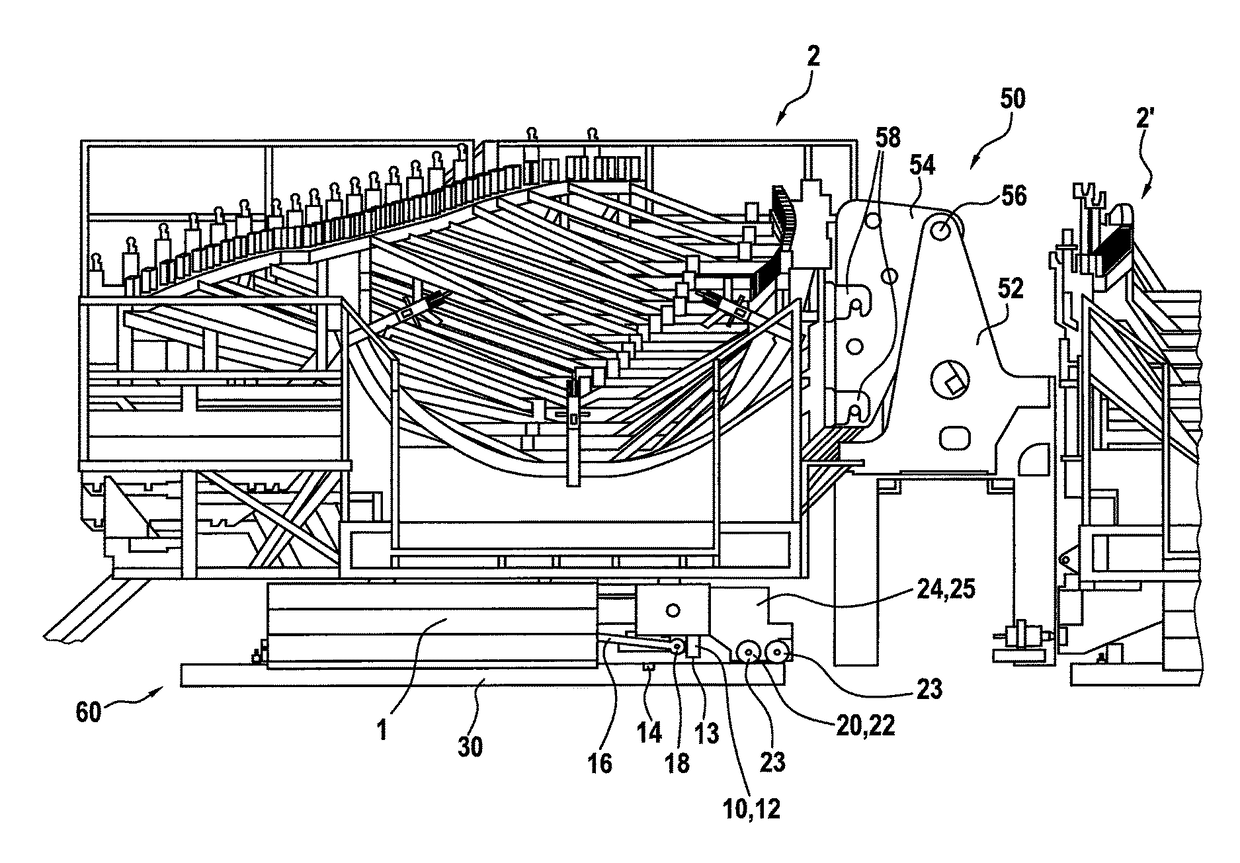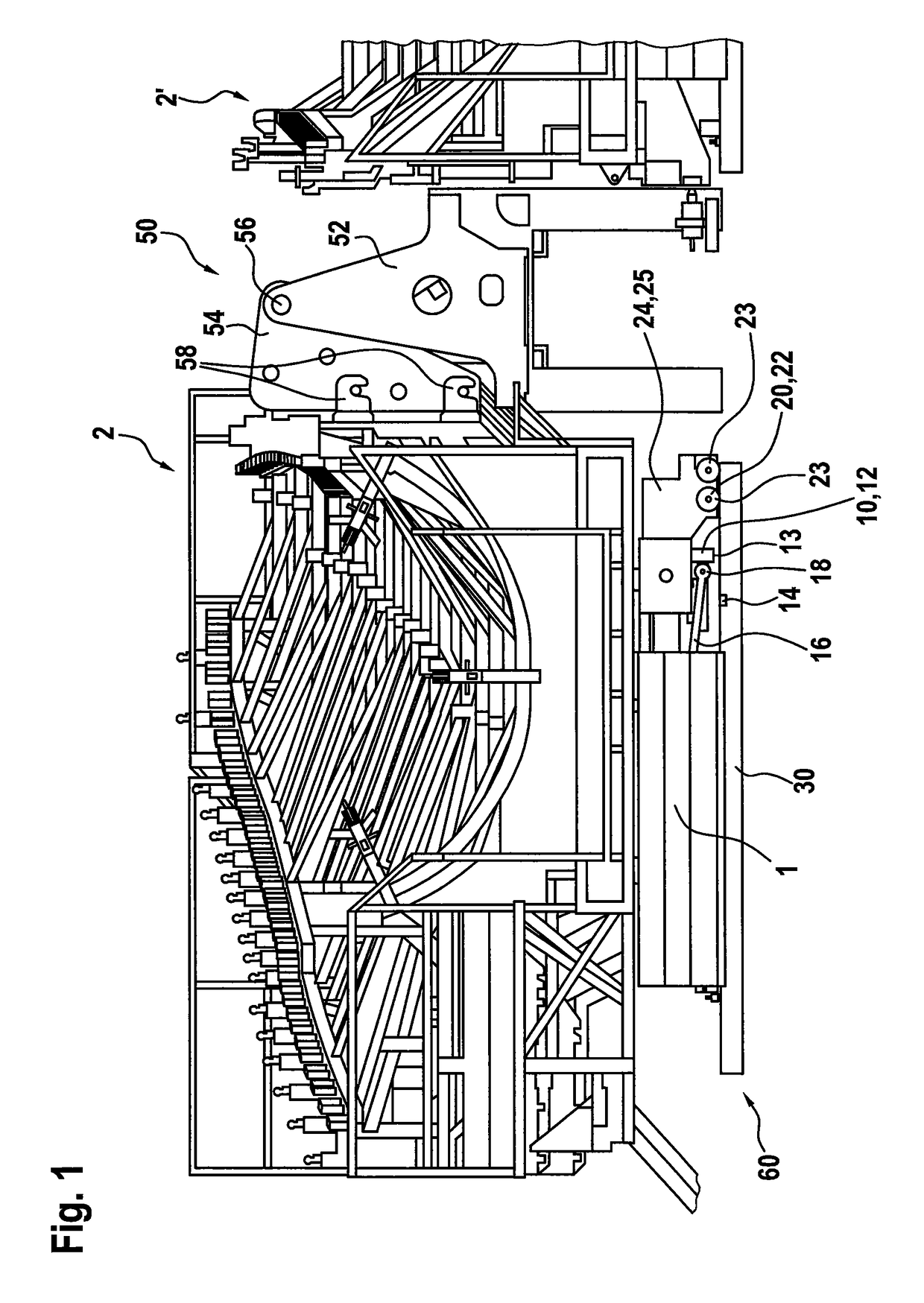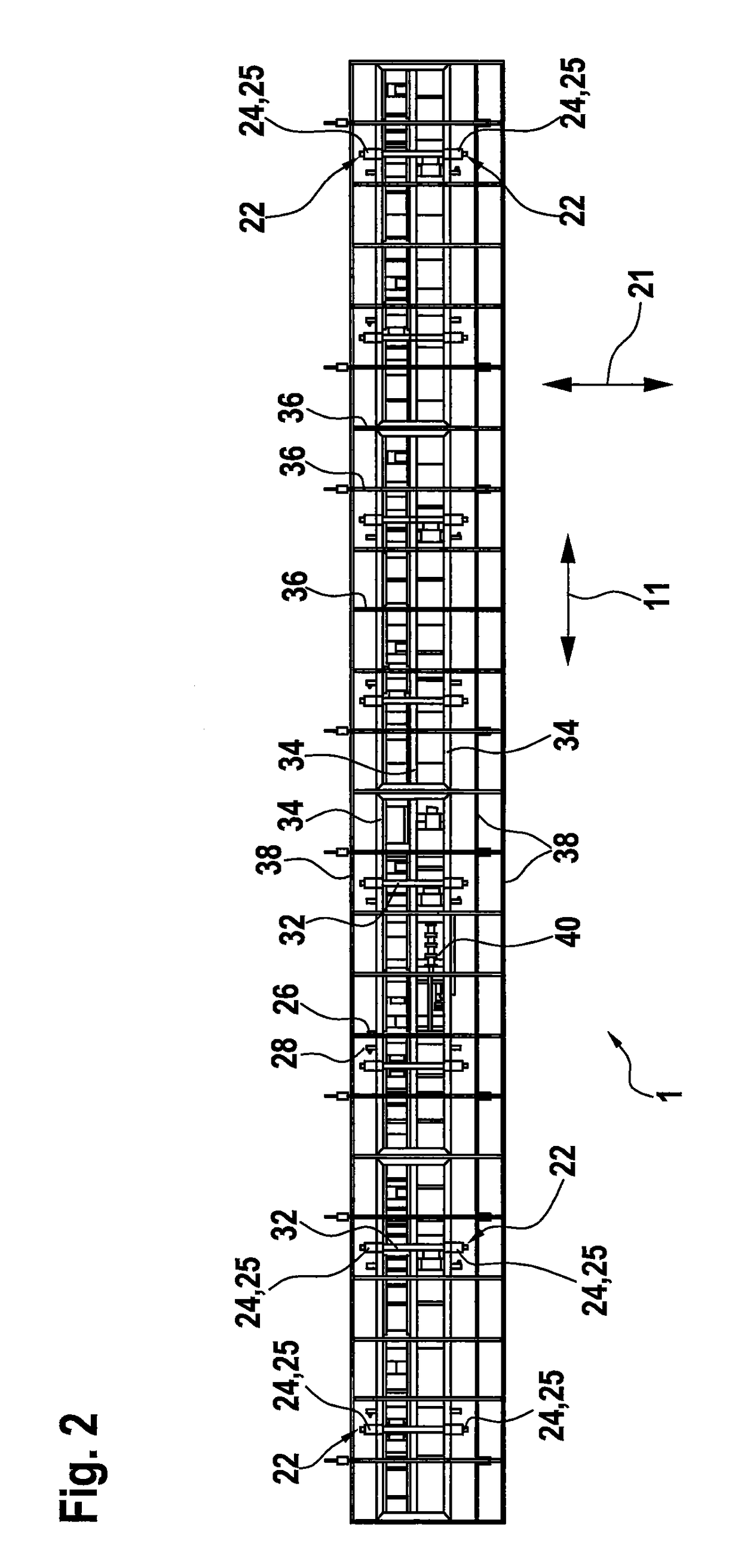Handling device for handling a rotor blade mold for producing a rotor blade of a wind turbine
a technology of a wind turbine and a handling device, which is applied in the field of transportation vehicles, can solve the problems of complicated and expensive, difficult displacement, and previously known solutions
- Summary
- Abstract
- Description
- Claims
- Application Information
AI Technical Summary
Benefits of technology
Problems solved by technology
Method used
Image
Examples
Embodiment Construction
[0051]FIG. 1 shows a perspective view of a transport vehicle 1 with a truss frame structure 2 arranged thereon. The truss frame structure 2 is already roughly adapted to the shape of a rotor blade to be produced and is provided for receiving a rotor blade mold. Such a rotor blade mold is appropriately laid in or placed on that truss frame structure as shown in the drawing. A rotor blade mold provided for the illustrated case is intended for the production of a shell portion of a rotor blade. A further rotor blade mold for a further shell portion would be placed in the truss frame structure 2′ which is only partly shown in FIG. 1. The rotor blade to be produced is finally assembled substantially from those two shell portions. For the sake of simplicity a truss frame structure like the truss frame structure 2 can also be referred to as the mold carrier.
[0052]To fit the two rotor blade shell portions produced in that way together, there is provided a hinge device 50 which has a fixed l...
PUM
| Property | Measurement | Unit |
|---|---|---|
| lengths | aaaaa | aaaaa |
| width | aaaaa | aaaaa |
| length | aaaaa | aaaaa |
Abstract
Description
Claims
Application Information
 Login to View More
Login to View More - R&D
- Intellectual Property
- Life Sciences
- Materials
- Tech Scout
- Unparalleled Data Quality
- Higher Quality Content
- 60% Fewer Hallucinations
Browse by: Latest US Patents, China's latest patents, Technical Efficacy Thesaurus, Application Domain, Technology Topic, Popular Technical Reports.
© 2025 PatSnap. All rights reserved.Legal|Privacy policy|Modern Slavery Act Transparency Statement|Sitemap|About US| Contact US: help@patsnap.com



